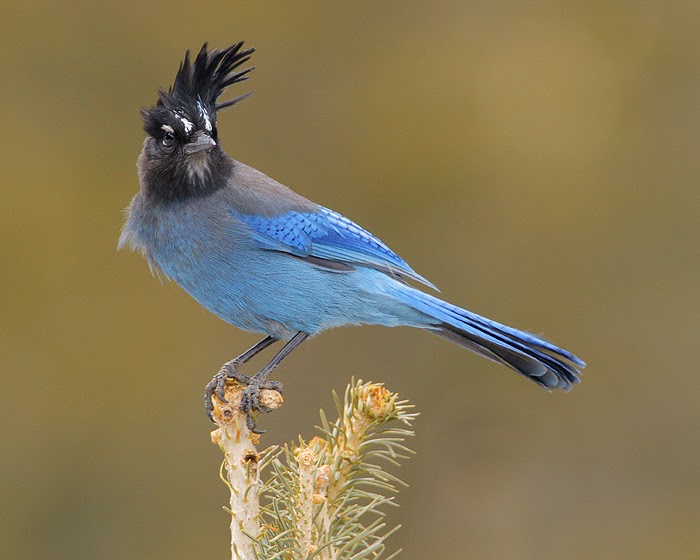 Steller's Jays have the doubtful honor of being a standout amongst the most often incorrectly spelled names in all of fledgling viewing. Up close, the winged animal's astonishing blend of purplish blue and blue is unquestionably stellar, however that is not how you spell their name. Steller's Jays were uncovered on an Alaskan island in 1741 by Georg Steller, a naturalist on a Russian pioneer's boat. The point when a researcher formally depicted the species, in 1788, they named it after him – alongside different findings including the Steller's ocean lion and Steller's Sea-Eagle.
Steller's Jays have the doubtful honor of being a standout amongst the most often incorrectly spelled names in all of fledgling viewing. Up close, the winged animal's astonishing blend of purplish blue and blue is unquestionably stellar, however that is not how you spell their name. Steller's Jays were uncovered on an Alaskan island in 1741 by Georg Steller, a naturalist on a Russian pioneer's boat. The point when a researcher formally depicted the species, in 1788, they named it after him – alongside different findings including the Steller's ocean lion and Steller's Sea-Eagle.
Steller's Jays move around with striking bounces of their long legs, both on the ground and around the spokelike fundamental limbs of conifers. They stop frequently to eye their surroundings, cocking their head with sudden developments thusly and that.
The Steller's Jay likewise is a prominent vocal copy. It can imitate the vocalizations of numerous types of fowls, different creatures, and qualities of non-creature root. It frequently will impersonate the calls from feathered creatures of prey, for example, the Red-tailed Hawk, Red-shouldered Hawk, and Osprey, initiating different winged animals to look for spread and escape encouraging zones.
Steller's jays from the scour jays. The blue jay, our other peaked jay, has white in the wings, tail, and face, and pale underpart.
Steller's jays
Steller's jays
Steller's jays
Steller's jays





































